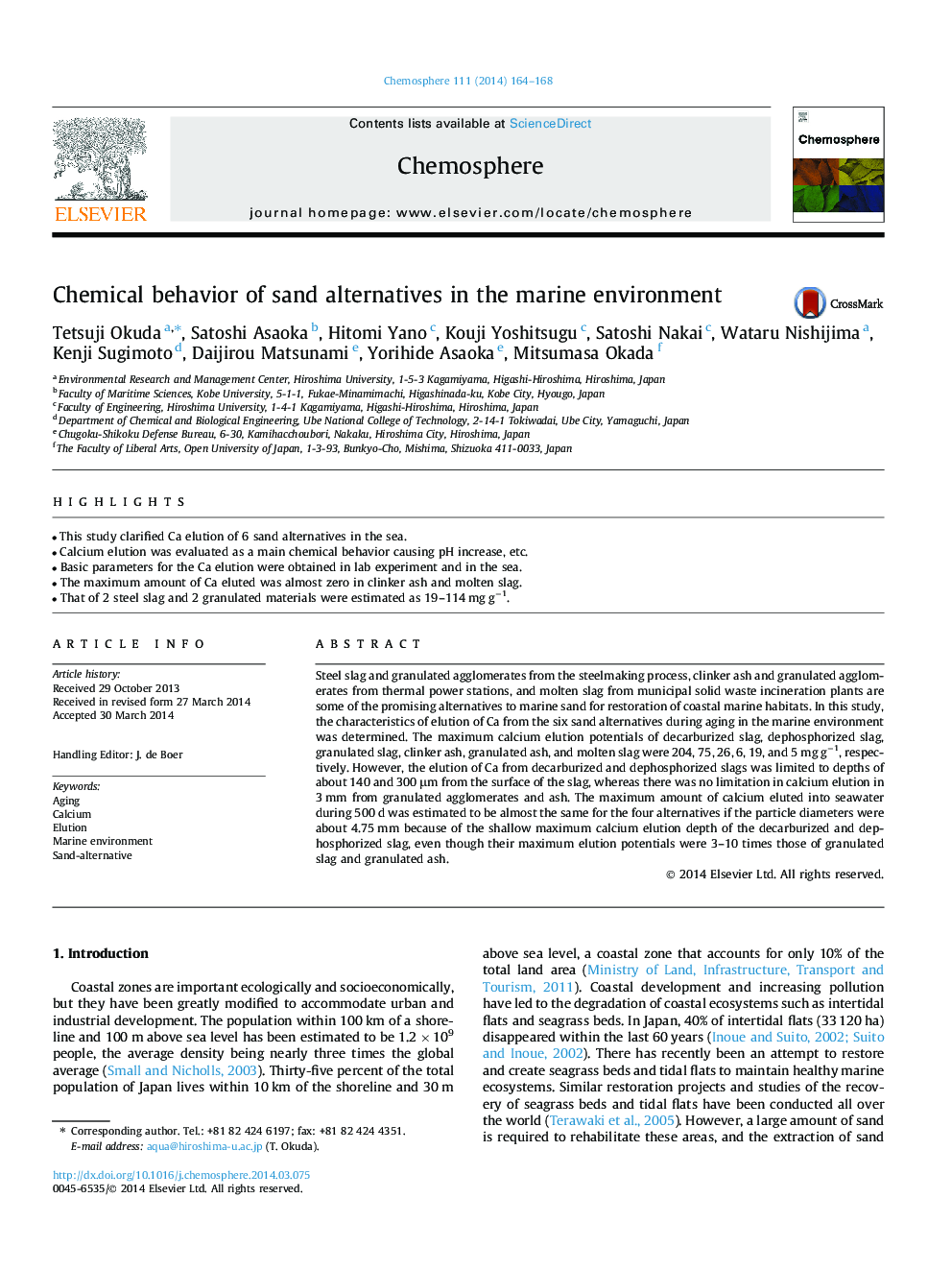| Article ID | Journal | Published Year | Pages | File Type |
|---|---|---|---|---|
| 6308648 | Chemosphere | 2014 | 5 Pages |
Abstract
Steel slag and granulated agglomerates from the steelmaking process, clinker ash and granulated agglomerates from thermal power stations, and molten slag from municipal solid waste incineration plants are some of the promising alternatives to marine sand for restoration of coastal marine habitats. In this study, the characteristics of elution of Ca from the six sand alternatives during aging in the marine environment was determined. The maximum calcium elution potentials of decarburized slag, dephosphorized slag, granulated slag, clinker ash, granulated ash, and molten slag were 204, 75, 26, 6, 19, and 5 mg gâ1, respectively. However, the elution of Ca from decarburized and dephosphorized slags was limited to depths of about 140 and 300 μm from the surface of the slag, whereas there was no limitation in calcium elution in 3 mm from granulated agglomerates and ash. The maximum amount of calcium eluted into seawater during 500 d was estimated to be almost the same for the four alternatives if the particle diameters were about 4.75 mm because of the shallow maximum calcium elution depth of the decarburized and dephosphorized slag, even though their maximum elution potentials were 3-10 times those of granulated slag and granulated ash.
Related Topics
Life Sciences
Environmental Science
Environmental Chemistry
Authors
Tetsuji Okuda, Satoshi Asaoka, Hitomi Yano, Kouji Yoshitsugu, Satoshi Nakai, Wataru Nishijima, Kenji Sugimoto, Daijirou Matsunami, Yorihide Asaoka, Mitsumasa Okada,
